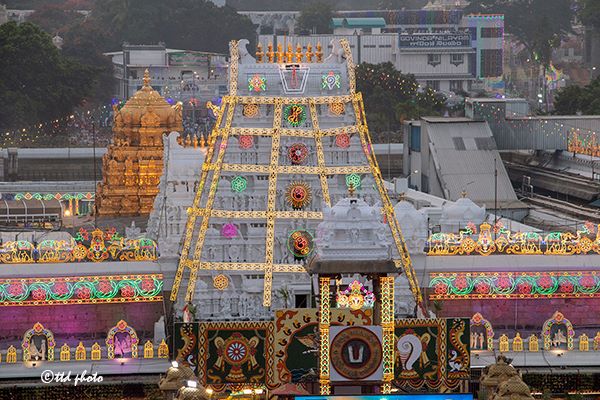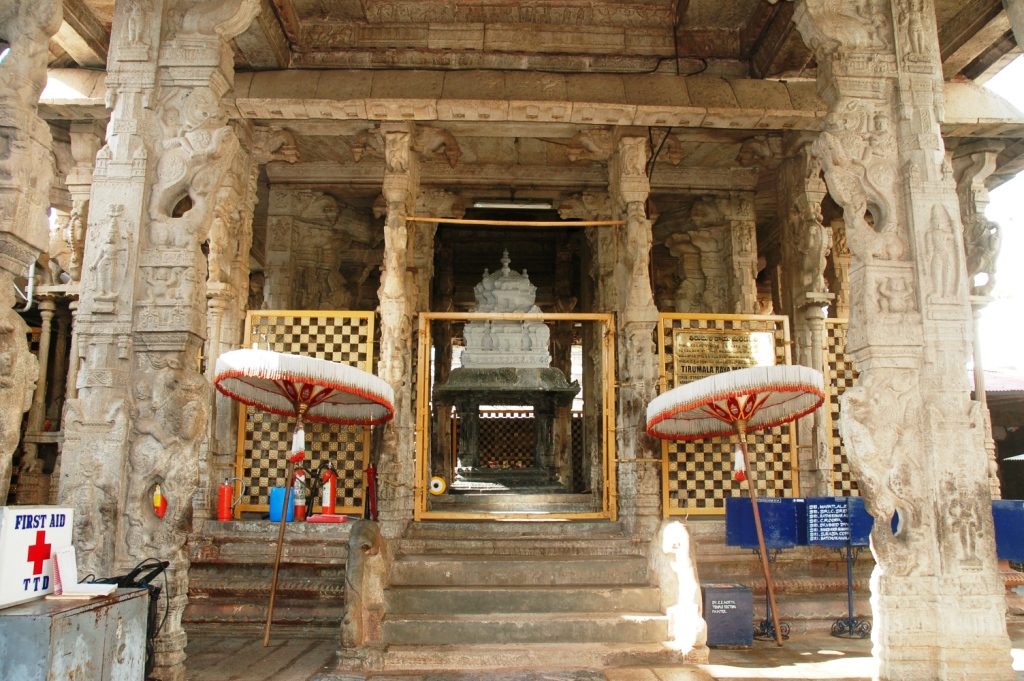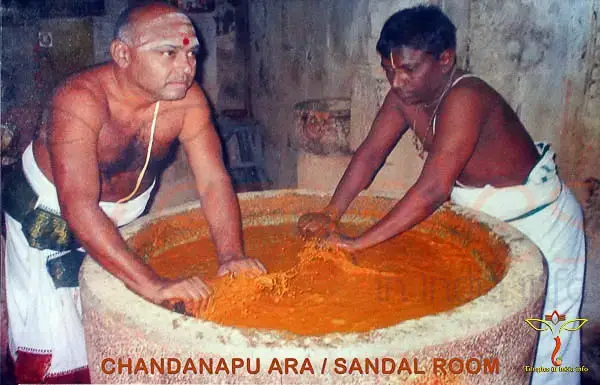Kalyanotsava Mandapam or Kalyana Mandapam The lush green forests of Seshachala house, Sri Venkateswara Swamy, who is also revered as Perumal, Venkatachalapati, Tirumalesa, Govinda, Balaji, Srinivasa and many more names. Mandapams – Tirumala Temple The ancient temple of Lord Venkateswara in the hill shrine of Tirumala is an amazing complex of history, culture, and traditions. Almost Read More
Category: Inside Tirumala Temple
In Lord Venkateswara’s dwelling place Tirumala of Venkatachala mountain, everyday auspicious things like Divine marriage, Inspiring spiritual festivities, Processions etc., Explore everything inside Tirumala temple.
Anna Unjal Mandapam
Mandapams of Tirumala The lush green forests of Seshachala house, Sri Venkateswara Swamy, who is also revered as Perumal, Venkatachalapati, Tirumalesa, Govinda, Balaji, Srinivasa and many more names. The ancient temple of Lord Venkateswara in the hill shrine of Tirumala is an amazing complex of history, culture, and traditions. Almost every brick speaks volumes about Read More
Sri Yoga Narasimha Swamy Temple – Inside Tirupati Balaji Temple
Sri Yoga Narasimha Swamy Temple On the Vimana Pradakshana path, in the northeast direction, there is a west-facing Yoga Narasimha Swamy temple. It has Mukha Mandapam (pillared entrance) Antharalamu (middle space) and Garbha Alayam (Sanctum Sanctorum). In the Sanctum Sanctorum, there is a three-foot-high platform. On that platform west facing idol of Yoga Narasimha is Read More
Chandanapu Ara (Sandalwood Room) – Inside Tirupati Balaji Temple
Sandalwood Room – Chandanapu Ara To the north of Notla Parakamani i.e., the currency counting centre, in the north-west corner there is a room with a grilled door. This is known as ‘Chandanapu Ara’i.e., ‘sandalwood room’. Chandana pani Sandalwood paste that is required for the daily use of the temple is prepared in this room. Read More
Bangaru Baavi (Golden Well) – Inside Tirupati Balaji Temple
Bangaru Baavi (Golden Well) There is a well by the side of Lord’s chief kitchen. This well is known as Bangaru Baavi (Bangaru means gold in Telugu. Baavi means well). When devotees come out through the Golden door after having the darshan, a path leads to the chief kitchen opposite the Golden door. Adjacent to Read More
Potu (kitchen Hall) – Inside Tirupati Balaji Temple
Kitchen Hall (Potu) Inside Tirumala Temple ‘Potu’ according to temple traditions gives the meaning of kitchen hall or room. Here tasty delicious sweets are prepared. When we come out of the golden door, after having the darshan of ‘Pratyaksha Daivam’ i.e., God visible to the naked eye, we will be entering the premises of Vimana Read More
Poola Baavi (Flower Well) – Inside Tirumala Balaji Temple
Poola Baavi (Flower Well) Just opposite to Yamunottara flower room and adjacent to Mirror Mandapam, towards the North, there is a well. This well is known as Poola Baavi i.e., flower well. Tulasi, flowers and garlands that are offered to Sri Venkateswara and other Gods cannot and should not be used by the devotees. So Read More
Poola Ara (Flower Room) – Inside Tirupati Balaji Temple
Poola Ara (Flower Room) By the side of padipotu i.e., the holy kitchen, in the eastern direction, there is one room. As the flowers to be offered to Lord Venkateswara are stored here, they call it poola ara, which means flower room. Some people call it Pushpa mandapam (flower portico). Garlands meant for various Gods Read More
Potu Lakshmi Sannidhi (Inside Tirupati Balaji Temple)
Potu Lakshmi / Potu Thayar The Potu or Main Kitchen of the temple is three feet away from the Sri Varadaraja Sannidhi. It is a rectangular structure, 64 feet long (from East to West) and 30 feet wide (from South to North) with a Western Entrance. Since it stands on a pedestal, the devotee has Read More
Temple Bells Inside Tirupati Balaji Temple
Temple Bells Maha Mani Mandapam gets its name from the great bells to the right of the exit into the Vimana Prakara. The Bells are presently kept within glass doors. The ringing of bells is an important aspect of Vaikhanasa Agama, the religious system that is followed in the worship of Lord Venkateswara at Tirumala. Read More



